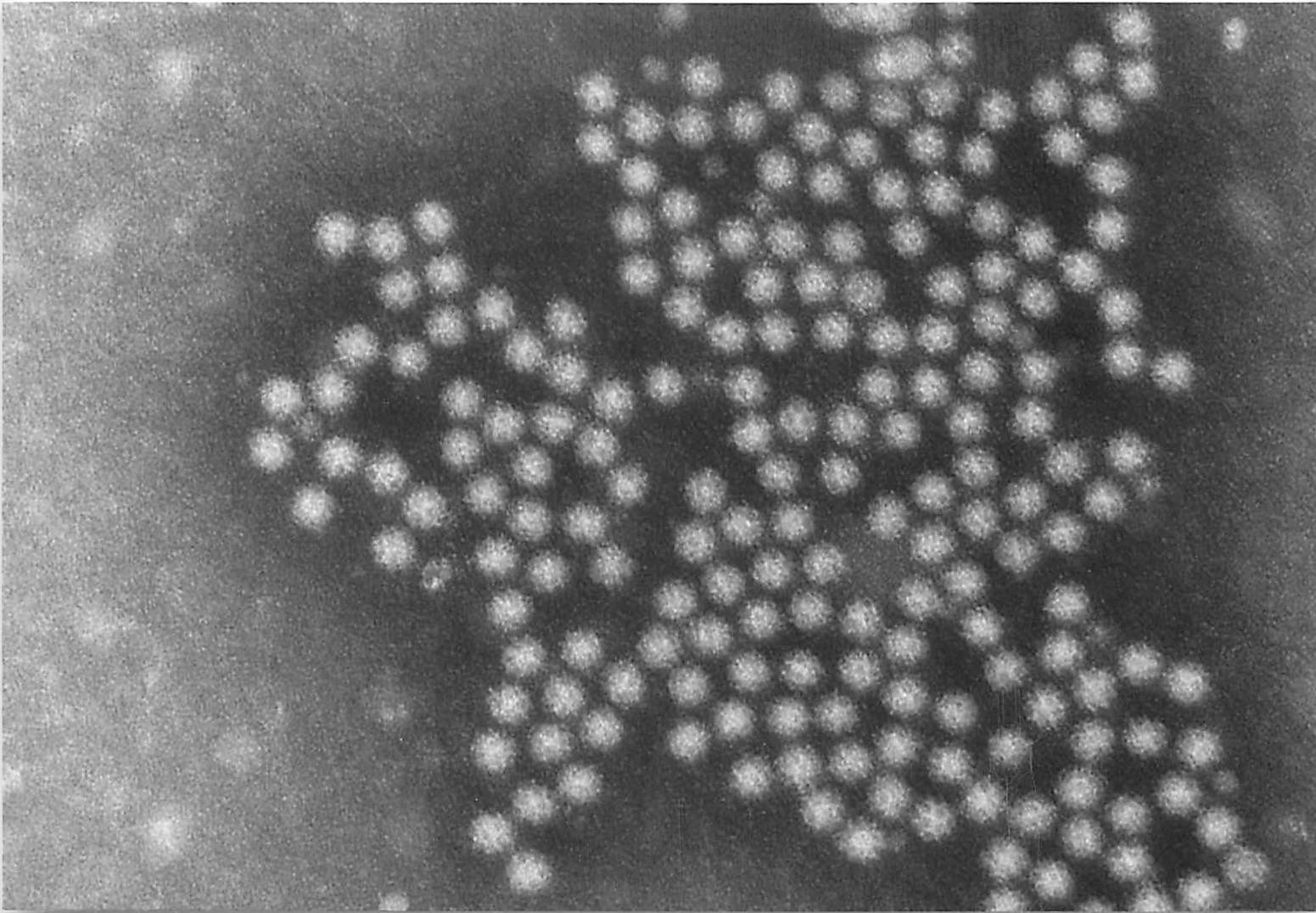Tokyo Food Safety Information Center » Good things to know » The microorganisms which cause food poisoning » Sapovirus
Sapovirus
Care must be taken as, in addition to food poisoning, Sapovirus-induced gastroenteritis has also led to mass outbreaks at nurseries, schools, and welfare facilities.
The infection routes, symptoms, and prevention methods for Sapovirus are the same as those of norovirus.
What is Sapovirus?
Like norovirus, Sapovirus is a virus belonging to the Caliciviridae family which multiplies in the mucous membranes of the human small intestine.
In 2002, the International Committee on Taxonomy of Viruses officially gave this virus the name of “Sapovirus; prior to that time it was known as the “Sapporo virus.”
The “Sapo” in “Sapovirus” is derived from Sapporo, Japan, where the virus was discovered.
Previously, Sapovirus was believed to be the cause of sporadic gastroenteritis mainly in children, but in recent years reports have been on the rise of mass outbreaks such as food poisoning.
Characteristics

Like norovirus, Sapovirus causes gastroenteritis throughout the year.
Epidemiological studies have strongly identified the eating of raw bivalves such as oysters and food prep workers carrying the virus as being part of the virus’ transmission route. In addition, as there have been cases of mass outbreaks at facilities such as schools and daycares where no raw oysters were eaten, person to person secondary infection is suspected to exist.
In recent years, the development and popularization of a new testing method (real-time PCR) has clarified the relationship between Sapovirus and food poisoning.
Which foods can cause Sapovirus infection?
Sapovirus can cause food poisoning via raw or undercooked bivalves such as oysters. In addition, Sapovirus can contaminate food and infect those who eat it when infected individuals and those cleaning up stool and vomit containing Sapovirus fail to wash their hands thoroughly enough and prepare food thereafter.
What are the symptoms of Sapovirus infection?
Like norovirus, Sapovirus’ primary symptoms include vomiting, diarrhea, and fever, making it difficult to distinguish from norovirus. The incubation period for Sapovirus is 12 to 48 hours, with illness generally lasting from 1 to 2 days and, in longer cases, continuing for around a week.
What are the key points to preventing Sapovirus infection?
- Thoroughly cook bivalves such as oysters so that the heat penetrates all the way to their center before eating (85 to 95° C for longer than 90 seconds). Parboiling does not sufficiently heat food to remove norovirus’ ability to infect people.
- Thoroughly wash fresh woods (vegetables, fruits, etc.).
- Wash hands thoroughly after using the toilet, when preparing food, and before eating (see Let’s work together and wash our hands)
- Use only clean towels after washing hands.
[Preventing secondary infection…]
<At home, nursery, and school>
- Avoid coming in contact with the stool and vomit of infected individuals and, if contact is made, thoroughly wash and disinfect affected areas.
- When cleaning up clothing and other items contaminated by vomit and stool, use vinyl gloves and a mask.
- Wash clothing and other items contaminated with vomit and stool separately from other items.
- Soak utensils and rags used to clean up vomit and stool in chlorine bleach before washing them.
- Wipe floors contaminated with vomit using a cloth soaked in chlorine bleach and let sit for a period of time to disinfect the area.
- Once affected items have been cleaned up, wash hands thoroughly and gargle.
<For operators of facilities which handle food>
- When food prep workers show symptoms similar to a cold such as diarrhea, nausea, vomiting, stomach pain, and fever:
- Do not allow such workers to engage in food preparation.
- Have them get diagnosed at a medical institution and talk with a physician.